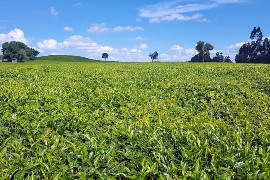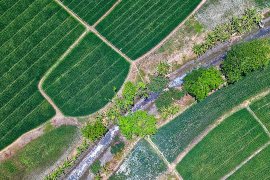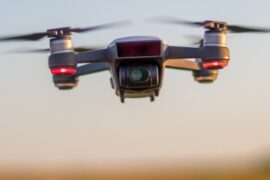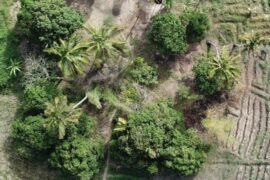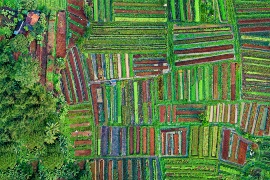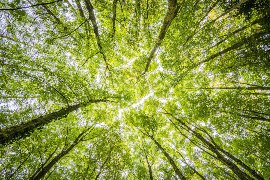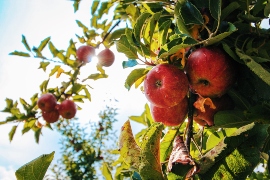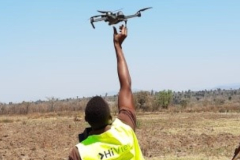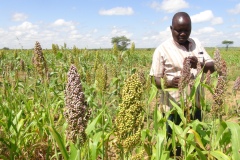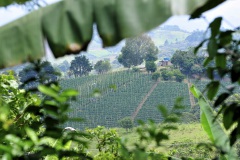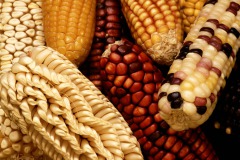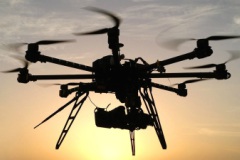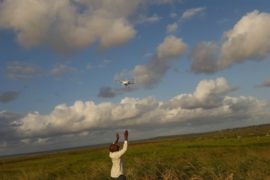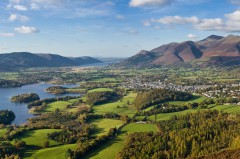Concepto
La mayoría de los agricultores subsaharianos tienen recursos limitados y no tienen acceso a los datos agrícolas. La información adecuada en el lugar y el momento correctos es esencial para que estos agricultores tomen decisiones con respecto a la aplicación de sus recursos limitados, como agua, semillas, fertilizantes y mano de obra. FutureWater desarrolló un servicio utilizando sensores de vuelo de bajo costo en un contexto de desarrollo para garantizar que los agricultores obtengan información a su nivel específico de comprensión y al mismo tiempo desarrollen una red de proveedores de servicios. Los sensores de vuelo proporcionan información valiosa de alta resolución, utilizando imágenes infrarrojas, térmicas y visuales para detectar el estrés de los cultivos en los campos agrícolas. La luz infrarroja no es visible para el ojo humano, pero proporciona información sobre el estado del cultivo aproximadamente 10 días antes de lo que puede verse por el espectro rojo-verde-azul que es visible para el ojo humano. Con base en las imágenes, que tienen una resolución de aproximadamente 2 cm / píxel, los agricultores pueden tomar decisiones sobre dónde hacer qué en términos de riego, aplicación de fertilizantes y pesticidas.
Con sensores de vuelo (drones) podemos proporcionar información esencial:
- A una resolución espacial ultrafina
- A una flexibilidad sin precedentes en ubicación y tiempo
- En un espectro fuera del ojo humano
- En un enfoque orientado a los negocios en el país
Estamos convencidos de que esta innovación es un verdadero cambio de juego comparable con la introducción de teléfonos móviles que les dio a los agricultores información instantánea sobre los mercados y los precios del mercado. Con la información de los sensores de vuelo, también pueden administrar sus entradas para maximizar los rendimientos y, al mismo tiempo, reducir el desperdicio innecesario de recursos. En lugar de depender de la gestión del sentido común, los agricultores ahora pueden tomar decisiones basadas en hechos, lo que resulta en un aumento de la productividad del agua. En resumen, los sensores de vuelo cierran el enlace que falta a la información agronómica sobre dónde hacer qué y cuándo, lo que lleva a obtener más producción por menos agua.
Aplicaciones FutureWater
En los últimos años, hemos establecido con éxito servicios operativos de sensores de vuelo para pequeños agricultores en Kenia y Mozambique. Actualmente estamos sirviendo a miles de agricultores a través de una red de operadores locales. Nuestro modelo de negocios apunta a establecer empresas independientes en países africanos, como lo hicimos hasta ahora en Kenia y Mozambique. Estas compañías emplean a agrónomos locales que están capacitados en el uso de sensores de vuelo. Ellos visitan los campos de los agricultores realizan vuelos, analizan las imágenes y las utilizan para asesorar a los agricultores, por lo que se les paga directamente.
En este momento estamos trabajando en la integración de cámaras térmicas con los sensores de vuelo para detectar específicamente el estrés de los cultivos relacionados con el agua y estamos desarrollando portales en línea a través de los cuales todos los mapas de sensores de vuelo están disponibles. Uno de estos portales se puede encontrar aquí.
Proyectos relacionados
-
Integrated Water Resources Management in Tajikistan
Given the abundant freshwater resources in Tajikistan, water plays a crucial role in the country's socioeconomic development. However, the rising population, economic growth, and the growing impacts of climate change pose significant challenges to ensure water availability and accessibility. This project aims to address the aforementioned information gap by improving...
-
HiFarm: Data Driven Agricultural Intensification Pilot Program for Maize, Coffee and Tea Farmers in Kenya
The eco.business Fund, in partnership with FutureWater and Export Trading Group (ETG), one of the largest integrated agricultural supply chain managers and processors in sub-Saharan Africa, has launched a pilot project in Kenya for data-driven agricultural intensification. This project aims to improve farmer productivity and profitability whilst enhancing the environmental...
-
A Practical Farmers’ Toolkit – Geodata for Climate Smart Agriculture in Egypt
The 'Farmers Toolkit' as presented in this project contains various geodata tools applicable for farmers to assist their decision-making and adopt climate smart agricultural practices. This project launches a training program on these tools, which are: Flying Sensors, irrigation advisory services (IrriWatch portal), WaPOR and Google Earthengine Apps, and Climate...
-
Tailor-made Advice and Training on Flying Sensors for Agriculture in Jordan
This online training was provided over a period of 8 weeks for 25 participants selected by NARC (National Agricultural Research Centre) Jordan. The online training consisted of self-paced exercises and regular live (video) sessions provided through the OpenCourseWare website of IHE Delft. The four modules provided in this training will...
-
Cadastre Mapping with Flying Sensor Imagery in Mozambique
In this project TerraFirma hired FutureWater, HiView and ThirdEye Limitada (Chimoio, Mozambique) to acquire flying sensor imagery over a pilot area near Quelimane, Mozambique. The objective of this pilot project is to determine the suitability of using flying sensor imagery for cadastre mapping in an area of small-scale agriculture in...
-
Tailor-Made Training on Crop Models and Remote Sensing for Water Management in Agricultural Systems
FutureWater, HiView and ThirdEye Kenya have partnered with Egerton University (Crops, Horticulture & Soils Department) to conduct a tailor-made training on 'Crop models and remote sensing for water management in agricultural systems'. This training project is funded by the NUFFIC - TMT program.
-
Determining biomass potential with Lidar point cloud of the Netherlands
This MIT feasibility project investigates the opportunities of an innovation project for determining the biomass potential from local nature management and green maintenance using the publicly available Lidar point cloud of the Netherlands. If the results are positive, this may lead to an innovative logistics support service where producers and...
-
Preventing frost damage in fruit cultivation by thermal imaging with flying sensors
This feasibility project investigates the opportunities of an innovation project for monitoring the effectiveness of wind machines as a frost protection measure in fruit cultivation using flying sensors (drones) equipped with a thermal imager. The results of this feasibility project may lead to an innovative information service to fruit growers...
-
Incorporating Flying Sensors to Increase Agricultural Productivity in Central Mozambique
The PROMAC II project is an ongoing project of NCBA Clusa introducing conservation farming practices to various locations in the Manica, Tete and Zambezia provinces, with the objective to increase agricultural productivity. This project incorporates flying sensor activities in the PROMAC II project as a M&E indicator of the practices...
-
APSAN-Vale: Piloting Innovations to Increase Water Productivity and Food Security in Mozambique
The project has as its overall aim to increase climate resilient agricultural productivity and food security, with a specific objective to increase the water productivity and profitability of smallholder farmers in Mozambique, prioritizing small (family sector) farmers to increase food and nutritional security. This project will demonstrate what the best...
-
SMART-WADI: SMART WAter Decisions for Iran
The SMART-WADI project (SMART Water Decisions for Iran), carried out by a consortium of FutureWater, IHE-Delft, and local partner EWERI, focuses on farmers who irrigate their crops with groundwater. The aim is to provide up-to-date information and advice on water productivity, irrigation and farm management. The project combines the latest...
-
TWIGA: Transforming Weather Water data into value-added Information services for sustainable Growth in Africa
TWIGA aims to provide actionable geo-information on weather, water, and climate in Africa through innovative combinations of new in situ sensors and satellite-based geo-data. With the foreseen new services, TWIGA expects to reach twelve million people within the four years of the project, based on sustainable business models. The TWIGA...
-
Water Productivity mapping using Flying Sensors and Crop Modeling
The objective of this pilot study was to achieve plot-level maps of water productivity and yield to test a methodology to assess the performance of different farmers in order to provide them with recommendations to improve water productivity. More specifically, this pilot study combined high-resolution imagery from Flying Sensors with...
-
Flying Sensors for Ultra-High Resolution Flood Risk Identification at Local Scales
The outputs of this project can be summarized as providing real time dike and levee information at local scales (up to 10,000 ha) that is collected, analysed and used at the same local scale. The output is divided into two components. First, the Flying Sensor information will be used for...
-
ThirdEye: Flying Sensors to Support Farmers’ Decision Making
The ThirdEye project supports farmers in Mozambique and Kenya with their decision making in farm and crop management by setting up a network of flying sensors operators. Our innovation is a major transformation in farmers’ decision making regarding the application of limited resources such as water, seeds, fertilizer and labor....
-
OWASIS-UK: Observatory of Water Availability – System of Integrated Services
The main objective of this study is to explore the potential to combine optical and gravity data from Earth Observation with meteorological data, together with innovative in situ sensors, hydrological modelling and crowd sourcing technologies, and the advanced visualization of the information through situation awareness platforms and decision support tools,...


